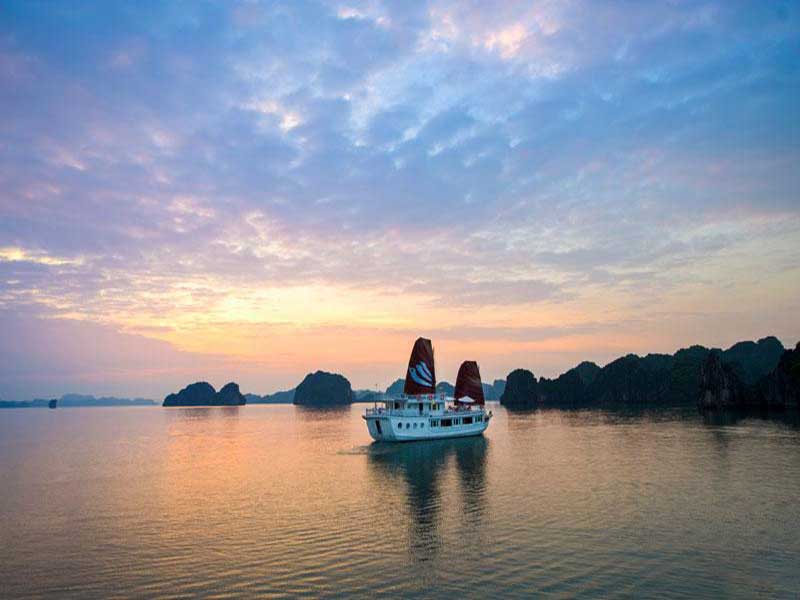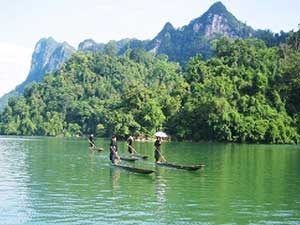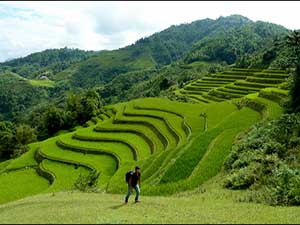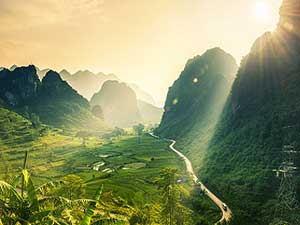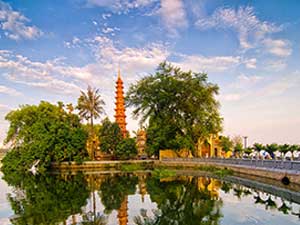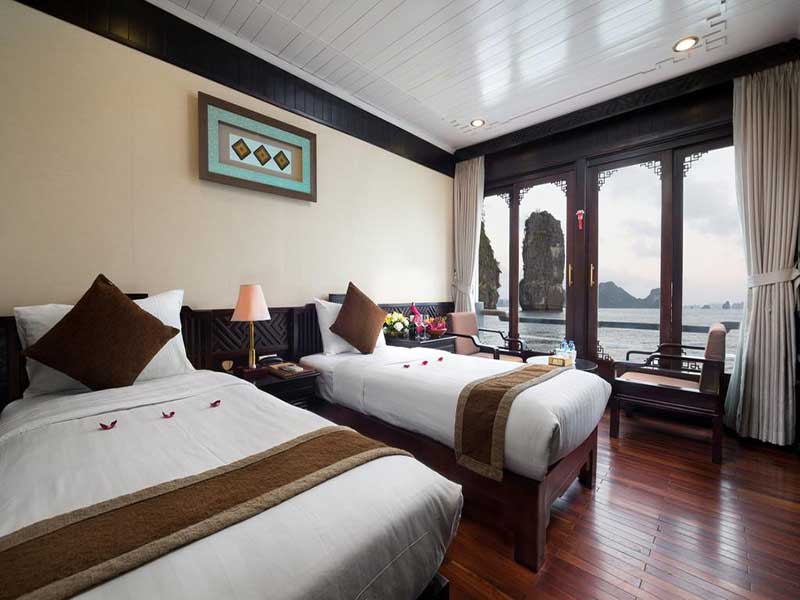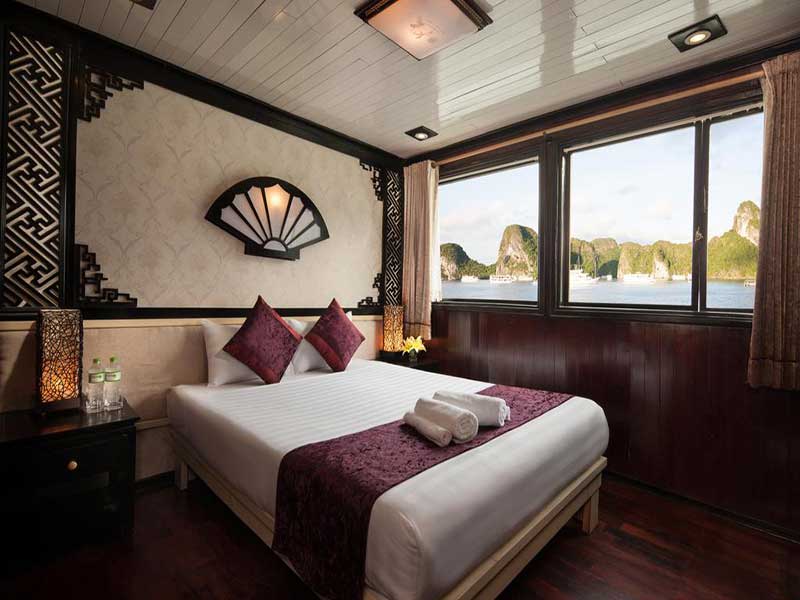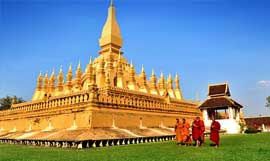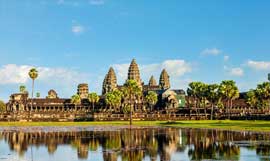In the list of most beautiful world heritages in Asia, we would like to introduce 10 of them as tourists’ rating. Asia is blessed with many unique geographical features. The history of the millennia of civilizations has left many distinctive marks on the nations and cultures of this continent. Asia is the largest continent in the world, is the home of World Cultural Heritage recognized by UNESCO. The culture, race and natural environment here are diverse due to its enormous size. To be listed on the World Heritage List, a heritage must meet one or more cultural or natural criteria under the World Heritage Convention. This following article will give readers a list of the most 10 beautiful world heritages in Asia.
1) Ha Long Bay – Vietnam
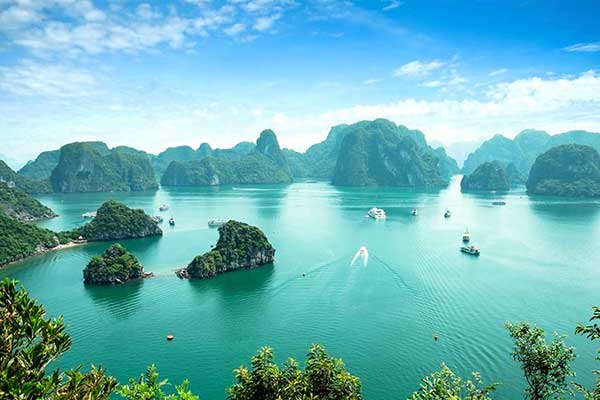
Located in Northeast of Vietnam, Ha Long Bay is a part of the Gulf of Tonkin, including the waters of Ha Long City, Cam Pha Town and a part of Van Don Island District. Ha Long Bay is a well-known destination because this place has features of a beautiful island system and caves. There are 1969 islands, including 989 named islands and 980 unnamed islands. Each island has a very different shape. From above look down, Ha Long Bay as a lively giant watercolor painting. These are the beautiful sculptures, the mystery of nature has made silent stones become sculptures, fine painting with all kinds of looks.
Ha Long Bay is a unique heritage because this place contains important vestiges in the process of forming and developing the history of the earth. The presence of thousands of islands of various shapes, with many interesting caves clustered into a lively and mysterious world.
Ha Long Bay is also famous for its biodiversity with typical ecosystems and extremely rich and diverse thousands of species of plants and animals. Ha Long Bay has about 347 plant species and 60 endemic animal species.
Coming to Ha Long Bay, tourists can participate in various types of tourism: sightseeing, bathing, researching and many other types. At present, visitors to Ha Long Bay mainly to go sightseeing, swimming and kayaking.
At present, fishermen in Ha Long still preserve the ancient singing. Especially according to customs in a fishing village, the wedding is only held on the full moon day because this is the morning light, fishermen do not go fishing.
Ha Long Bay has been recognized many times as a natural heritage of the world by UNESCO with thousands of islands made by the great and lively creation. Ha Long Bay has beautiful scenery so this place is a very attractive tourist destination with domestic and international tourists.
2) Kamchatka Volcano – Russia
Volcanic eruption is a natural phenomenon on Earth or other active seismic planets, with lithospheric shells moving on the molten mineral core. As the volcano erupts, some of the energy hidden in the planet’s core is released. With many low and high volcanoes, Kamchatka is a UNESCO World Heritage Site. Many volcanoes here are the highest and most beautiful volcanoes in the world. Kamchatka has opened to many travelers and scientists, fulfilling their dreams of adventure to come here and study the rich ecosystem.
Kamchatka is a peninsula in the Far East. The Kamchatka River and the central valley are surrounded by vast volcanic mountains containing about 160 volcanoes, 29 of which are still active. The most famous volcanic peak here is the Tolbachik, with a steep sidewalk but visitors can see the panorama of the area. The highest volcanic mountain is Klyuchevskaya Sopka at 4,750 meters.
Additionally, the scenery is filled with colorful valleys, fast flowing rivers of salmon and Kamchatka brown bear.
3) Angkor Archaeological Park – Cambodia

Angkor Archaeological Park, Cambodia is one of the largest archeological sites in Southeast Asia. It consists of many temples or irrigation systems and important transport routes of the Khmer empire from the 9th to 15th centuries. This includes Angkor Wat, Angkor Thom, Bayon and countless other sculptures. You will be impressed by the Bayon temple with giant sculptures and Angkor Wat, the largest Hindu temple in the world, surrounded by smaller temples like Ta Prohm, Preah Khan, Pre Rup and Ta Nei.
Angkor Archaeological Park is one of the most important relics in Cambodia, and is considered the culmination of Khmer art and architecture. The destroyed temples inside the park also represent the remnant of the capital of the Khmer regime. Angkor temples are high symbolic works. The vast area of the park has been excavated for decades creating an archaeological wonder that attracts more than 2 million visitors each year. However, the population remains an undiscovered treasure.
Angkor Wat was built during the reign of King Suriya-warman II (1113-1150), visitors are amazed by the beauty of the architecture and the rock carvings; especially the architectural carvings of the dancing girls. Angkor Thom was built as the capital city of Jayavarman VII. The entrance to the Angkor Thom temple is impressive: the two sides are the body of the god of the head-seven snake. Angkor Thom city center is the Bayon temple with four gates in four different directions.
4) Rice Terraces of the Philippine Cordilleras
Rice terrace is one of the special types of farming that are not always available everywhere. Sometimes, people are fascinated by the bright lights in the city, the bustling life, and forgetting the simplicity of the fields. The experience and creativity of the people are evident from the selection of the land, to the elaborate process, forming the agricultural method combines smoothly between the fields and irrigation system. These terraces are 1,500 meters above sea level.
Rice Terrace of the Philippine Cordilleras is the only monument in the Philippines not affected by colonial cultures, the high rice terraces constructed along the border running around the mountains by the Ifugao people. Cultivation techniques used in this area make up a great landscape that demonstrates the harmony between the human and the natural environment.
5) The Historical Sites of Kyoto – Japan

In 1994, the historical site of Kyoto was recognized as World Cultural Heritage by UNESCO. Kyoto was the main center for the development of religious architecture, playing a decisive role in the creation of Japanese cultural traditions. It is now a place to store many historical and cultural relics in both material and spiritual aspects. In Kyoto, there are many Buddhist temples and Shinto shrines, all these ancient temples show the cultural and political characteristics of the past. Coming to Kyoto, you will have a truly wonderful holiday, immersed in the traditional space to understand about the Japanese history and people.
Many works, architecture and art were built in Kyoto, making this ancient city a place to preserve the most historical and cultural relics, places of interest, architectural works of art in Japan. When traveling to Kyoto, you should not miss to visit Kyoto Palace to feel the scenery and calm atmosphere here.
6) Historical center of Bukhara – Uzbekistan
The big cities on the ‘Silk Road’ like Samarkand, Bukhara and Khiva attract a lot of visitors by architectural masterpieces over the centuries. Bukhara is a historical city located between two vast deserts stretching from China to India. Being one of the main centers of Iranian civilization, Bukhara preserves the intact medieval city structure with more than 140 ancient works. It is considered as one of the most typical heritages of ancient cities in Central Asia. The attractive tourist attractions that travelers often visit are: Ismail Samani monument; Kalyan Minaret Tower, Kalyan Church; … Considered to be the most sacred city of central Asia, Bukhara boasts a thousand-year-old architecture. In addition, visitors will be able to enjoy traditional dishes in a casual atmosphere with Indian dishes, curries, barbecue, chicken “tikka” and “biryani “.
7) The Great Wall of China
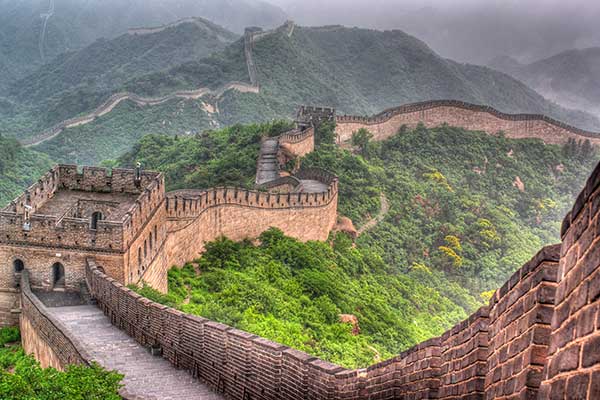
The Great Wall is the longest man-made construction in the world. It has been a great work because it stretched all along the north of China and was built for many years. The Great Wall was first built to protect the Chinese against attacks by nomadic peoples and tribes. With over 2,500 years of history, the Great Wall has witnessed the ups and downs of many Chinese dynasties. However, the remain Great Wall was built mainly under the Ming Dynasty, the old wall is only left a few relics. Coming to the Great Wall, visitors will see the unique and interesting natural scenery.
8) Dambulla Golden Temple – Sri Lanka
Situated in the center of Sri Lanka, Dambulla Golden Temple is considered one of the most important Buddhist wonders of the world. This intricate complex consists of caves and temples and statues of Buddha, elaborately carved mural. The temple’s attractions are in five caves, containing statues and paintings. These images are related to the Buddha and his life. Outside the main hall is a gilded Buddha statue. The two sides and the back of the cave are a series of Buddha statues. In the Dambulla Golden Temple, there is a total of 153 Buddha statues, 3 Sri Lankan statues and 4 statues of gods and goddesses. In addition to religious artwork, the Dambulla Golden Temple has retained evidence of human activity from prehistoric times.
9) Tropical Rainforest Heritage of Sumatra – Indonesia
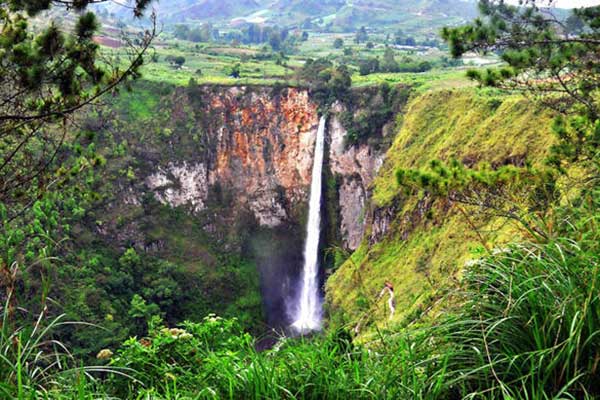
Tropical Rainforest Heritage of Sumatra was recognized as a World Heritage Site in 2004, which is a complex consisting of three major national parks. Visitors like to explore the majestic forest and enjoy its wilderness. Three famous national parks here are Gunung Leuser, Kerinci Seblat, and Bukit Barisan Selatan. All three gardens have outstanding beauty, rich ecosystems, natural habitats and many rare animals. Gunung Leuser Park is home to the Ketambe research station dedicated to the gibbon, Kerinci Seblat Park is the largest national park in Sumatra with hot springs, rivers, caves, beautiful waterfalls and the largest flowers in the world. Finally, Bukit Barisan Selatan Park has stretched on three provinces: Lampung, Bengkulu and South Sumatra.
10) Mountain Railways of India
Railway is the most common mode of transportation used in India. In particular, the mountain railways in the country not only contribute to the development of Indian commerce and industry, but are also an exciting find to attract the most tourists, especially the adventurous. The mountain railways of India, the stunning landscape created by human hands, offer visitors unprecedented adventures. This is still considered a “bridge” for socio-economic development in isolated communities in mountainous areas. This rails are specially designed to ensure the safety for passengers. The beauty of mountain railways of India lies in the places where they pass. These are rocky mountainous with stunning scenery stretching out of sight.













